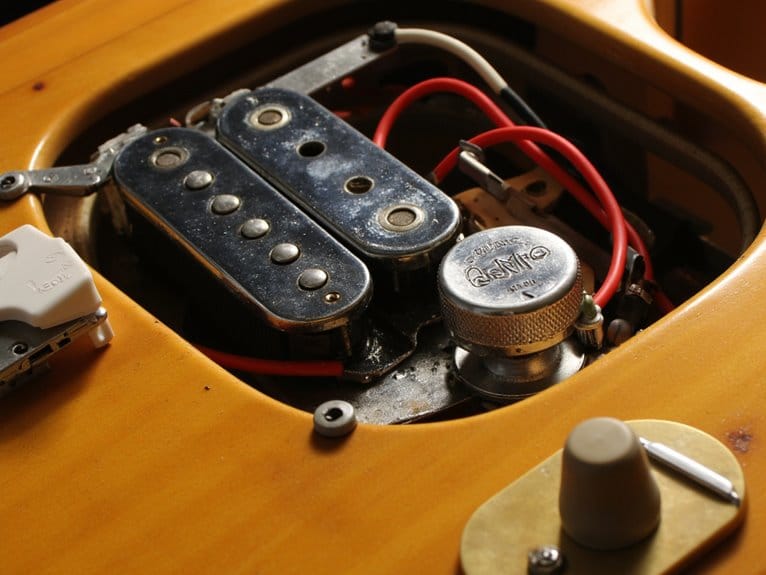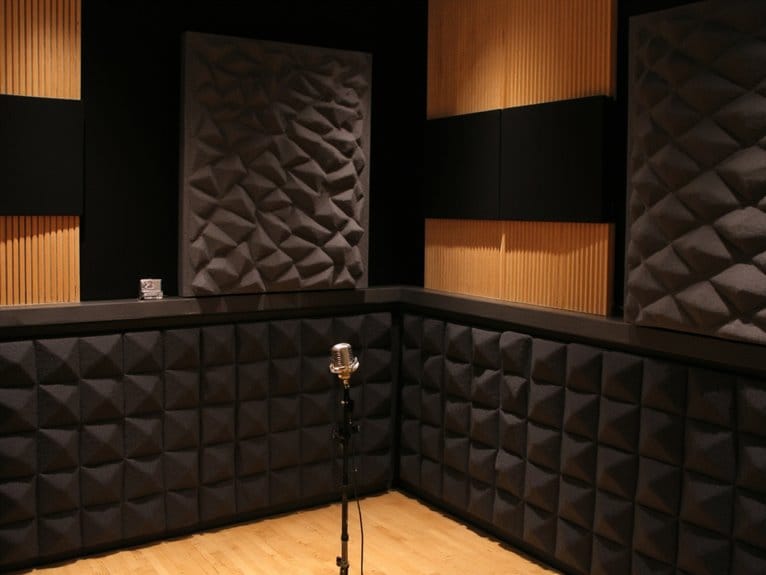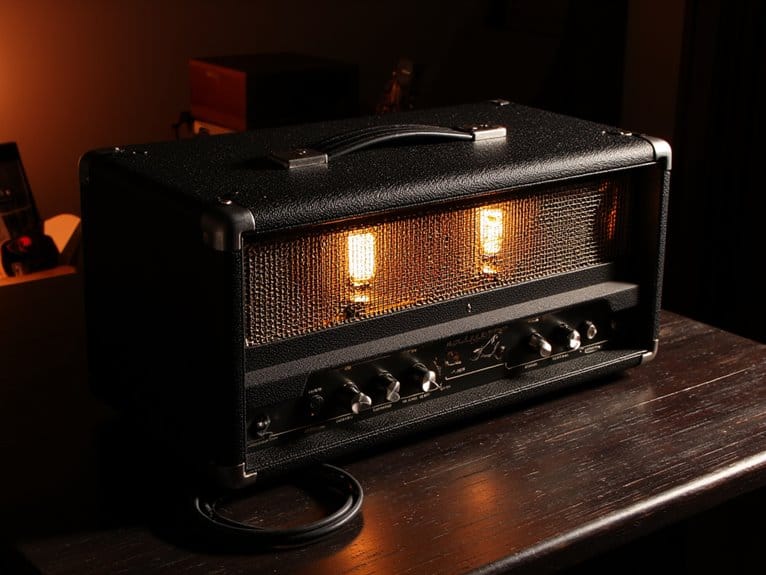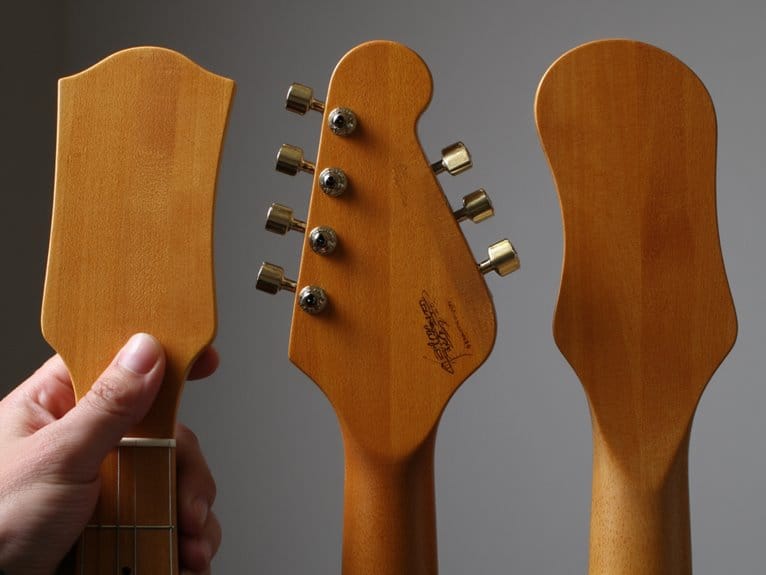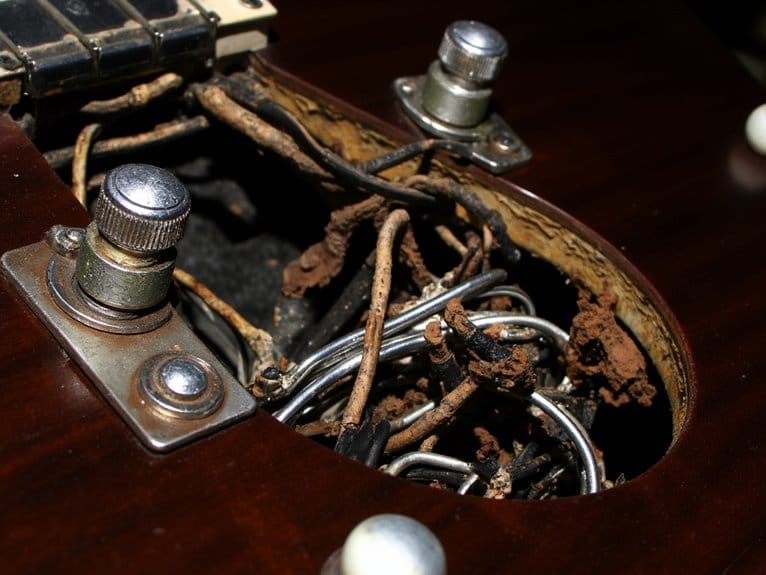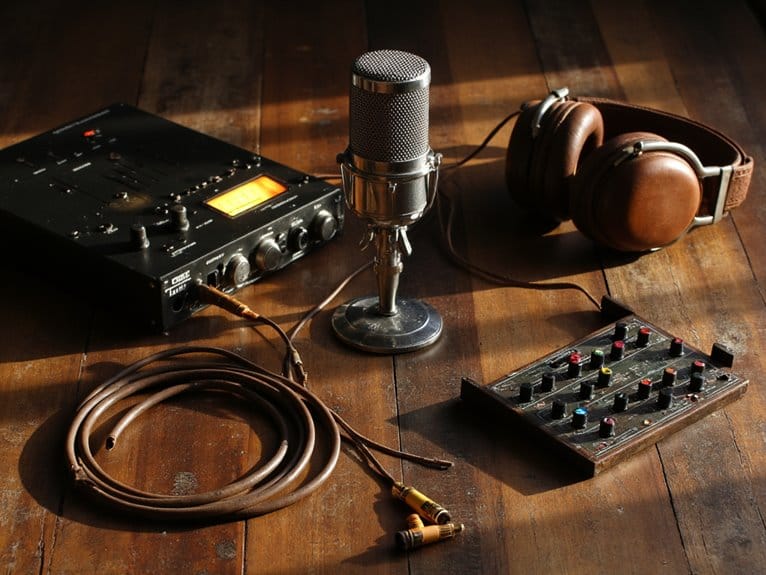Pickup Guide: Understanding Guitar Electronics
You’ll find guitar electronics revolve around pickups converting string vibrations into electrical signals, with single-coils delivering bright clarity while humbuckers provide warm, hum-free tones. Potentiometers control volume and tone, capacitors filter frequencies, and switches select pickup combinations for varied sounds. Active systems require batteries but offer higher output for metal genres, whereas passive electronics provide organic responsiveness preferred by blues players. Understanding these components transforms your instrument’s voice and opens possibilities you haven’t yet explored.
We are supported by our audience. When you purchase through links on our site, we may earn an affiliate commission, at no extra cost for you. Learn more.
Notable Insights
- Single-coil pickups offer bright, clear tones but create hum, while humbuckers provide warm, thick sounds with noise cancellation.
- Active pickups require batteries and deliver high output for metal/rock, while passive pickups offer organic, dynamic tones for blues/jazz.
- Pickup placement affects tone significantly: neck position provides warmth and bass, bridge position delivers brightness and attack.
- Potentiometers control volume and tone levels, while capacitors filter frequencies and switches select different pickup combinations for tonal variety.
- Upgrading electronics components like potentiometers and capacitors can significantly enhance your guitar’s tonal flexibility and signal quality.
Core Components and Their Functions in Guitar Electronics
When I first started tinkering with guitar electronics years ago, I’ll admit I was completely overwhelmed by the maze of wires, components, and technical jargon that seemed to require an engineering degree to understand.
Guitar electronics can feel like an intimidating maze of wires and technical jargon that requires an engineering degree to decode.
However, breaking down your guitar’s electronic system into its core components makes everything much clearer, and you’ll discover that each piece serves a specific, logical purpose in shaping your tone.
Your guitar’s electronics consist of five fundamental components: pickups that convert string vibrations into electrical signals, potentiometers that control volume and tone levels, capacitors that filter frequencies, switches that select pickup combinations, and output jacks with wiring that deliver your signal to the amplifier.
Understanding potentiometer taper differences and various capacitor types will help you make informed upgrade decisions. Just as nickel-plated steel strings provide consistent electrical conductivity for optimal signal transfer, quality electronics components ensure your guitar’s tone reaches your amplifier without degradation.
Similar to how bass guitars benefit from preamp pedals that enhance tonal flexibility and provide comprehensive EQ controls, guitarists can also upgrade their instrument’s electronics to achieve greater sound customization and improved signal quality.
Pickup Types and Wiring Configurations for Tonal Versatility
While mastering your guitar’s core electronics provides the foundation, selecting the right pickup types and wiring configurations truly reveals your instrument’s tonal potential, and I’ve found that understanding these choices can transform a mediocre guitar into something genuinely inspiring.
| Pickup Type | Tonal Character | Common Use |
|---|---|---|
| Single-coil | Bright, clear, susceptible to hum | Stratocaster-style guitars |
| Humbucker | Warm, thick, hum-canceling | Les Paul, SG models |
| P90 | Balanced brightness and warmth | Vintage and boutique guitars |
| Coil-split | Versatile humbucker-to-single conversion | Modern high-end instruments |
Different pickup placements dramatically affect your tone-neck positions deliver warmth and bass, while bridge placements provide brightness and attack. Coil splitting expands your humbucker’s versatility by accessing single-coil characteristics when needed, fundamentally giving you multiple pickup types in one instrument. The pickup type directly correlates with the genre and style of music you’ll be playing, making this choice crucial for achieving your desired sound.
Active Versus Passive Electronics Systems and Their Applications
Although I’ve experimented with both systems throughout my years of playing and modifying guitars, the choice between active and passive electronics fundamentally comes down to how you want your instrument to interact with your amplifier, your playing style, and the sonic characteristics you’re trying to achieve.
Active pickups require a 9V battery but deliver higher output levels, built-in preamps, and consistent tone that cuts through heavy mixes, making them ideal for metal and hard rock applications.
Passive pickups operate without power, offering organic, dynamically responsive tones that vary beautifully with your volume knob adjustments, though they’re more susceptible to electromagnetic interference and produce lower output levels that blues and jazz players often prefer for their natural expressiveness. These pickups work by using magnets and copper wire to convert string vibrations into electrical signals without requiring external power sources.
On a final note
You’ve now got the foundation to make informed decisions about your guitar’s electronics, whether you’re upgrading pickups, rewiring configurations, or choosing between active and passive systems. Remember, there’s no universally “best” setup-it’s all about matching your gear to your playing style and musical goals. Don’t be afraid to experiment with different combinations; I’ve learned that sometimes the most unexpected wiring changes yield the most inspiring tonal discoveries.

